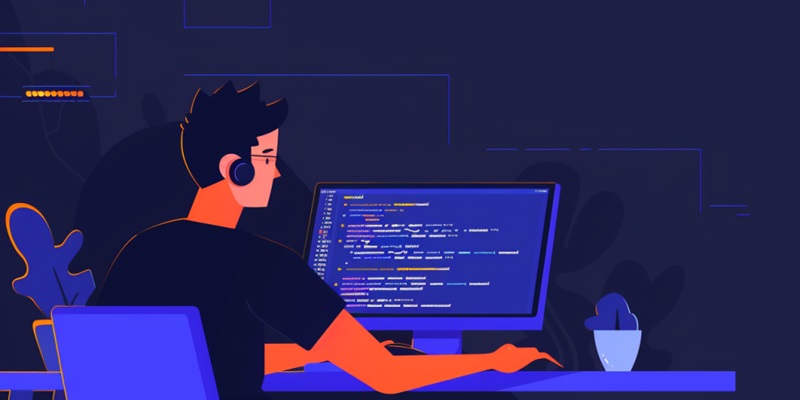In the ever-evolving landscape of software development and cybersecurity, Backslash Security has introduced groundbreaking advancements to enhance DevSecOps practices by integrating state-of-the-art simulation tools and large language models (LLMs). These innovations aim to streamline application security and governance within the software development lifecycle (SDLC), addressing some of the most persistent challenges faced by DevSecOps teams. Specifically, they focus on maintaining and upgrading software components without inadvertently introducing new vulnerabilities—a task that has plagued developers and security experts for years. Backslash Security’s recent launch of the Fix Simulation capability offers a significant leap forward in pre-emptively verifying the impact of software updates, particularly those involving third-party packages, before they are deployed. This proactive approach mitigates risks associated with updates, allowing teams to make informed decisions on whether minor or major updates are required for enhanced application security.
Fix Simulation: A Proactive Approach to Software Updates
The introduction of Backslash Security’s Fix Simulation capability marks a significant shift in how DevSecOps teams handle software updates, particularly those involving third-party packages. Historically, updating or upgrading software components has been fraught with risks, often leading to the introduction of new vulnerabilities. By allowing teams to pre-emptively verify the impact of these updates, the Fix Simulation tool enables a more informed decision-making process. Rather than merely hoping that updates will not compromise security, teams can now simulate potential scenarios and foresee the consequences of their actions. This proactive method not only mitigates the inherent risks but also facilitates a more seamless and confident approach to software maintenance.
Moreover, the ability to simulate the effects of updates before they are implemented helps teams to identify whether minor patches or major overhauls are necessary. This nuanced understanding is crucial for maintaining the balance between security and functionality. Often, minor updates may suffice to address vulnerabilities, thereby saving time and resources. On the other hand, when significant vulnerabilities are detected, a major update can be justified and meticulously planned. Ultimately, this capability ensures that DevSecOps teams are better equipped to maintain robust security postures without inadvertently creating new issues, thereby enhancing the overall effectiveness of the software development lifecycle.
Leveraging Large Language Models for Enhanced Security
One of the standout features of Backslash Security’s new suite of tools is the integration of large language models (LLMs) to generate remediation recommendations for identified vulnerabilities. The use of LLMs in this context serves a dual purpose: providing valuable insights while preserving code confidentiality. By leveraging advanced AI for security assessment, Backslash Security empowers DevSecOps teams to address vulnerabilities effectively without exposing sensitive code. This innovative approach adds a layer of security that traditional methods lack, ensuring that sensitive information remains protected even as it is assessed for weaknesses.
The integration of LLMs for generating remediation recommendations also significantly reduces the time spent by developers on identifying and fixing security issues. Traditionally, developers may spend only a small fraction of their time addressing vulnerabilities, often leading to recurring cybersecurity mistakes. By automating the initial assessment and recommendation process, LLMs enable developers to focus on implementing the solutions rather than spending countless hours on diagnosis. This efficiency is particularly crucial in an era where the volume of code being developed and deployed is increasing exponentially, necessitating more effective security measures to keep pace with the rapid development cycles.
Application Security Posture Management: Visualizing and Prioritizing Threats
Backslash Security’s advancements don’t stop at simulations and LLM integration; they also extend to an enhanced application security posture management (ASPM) platform. This platform plays a pivotal role in visualizing and prioritizing vulnerabilities based on their exploitability, providing DevSecOps teams with a clear understanding of the threats they face. An essential feature of the ASPM platform is its ability to detail specific lines of code and identify the developers responsible for them. This granularity ensures that vulnerabilities are not just identified but also effectively traced and addressed at their source.
The ASPM platform integrates a variety of essential tools, including vulnerability exploitability exchange (VEX), software composition analysis (SCA), static application security testing (SAST), secrets detection, and the generation of software bills of materials (SBOMs). Each of these tools contributes to a comprehensive security framework that enables teams to manage and mitigate risks more effectively. By centralizing these functionalities, the platform offers a streamlined approach to security management, reducing the complexity and fragmentation that often hinders effective security practices.
Addressing Longstanding Security Challenges
In the dynamic realm of software development and cybersecurity, Backslash Security has pioneered new advancements to elevate DevSecOps practices by incorporating cutting-edge simulation tools and large language models (LLMs). These innovations aim to refine application security and governance throughout the software development lifecycle (SDLC), tackling long-standing issues faced by DevSecOps teams. Specifically, they focus on updating and maintaining software components without inadvertently creating new vulnerabilities—a persistent challenge for developers and security professionals. Backslash Security’s new Fix Simulation capability marks a significant step forward, allowing teams to pre-emptively verify the impact of software updates, particularly those that include third-party packages, before deployment. This proactive strategy mitigates the risks associated with updates, enabling teams to make educated decisions on whether minor or major updates are necessary to improve application security. Overall, this initiative helps ensure that the software remains both secure and functional, meeting modern security standards without compromising efficiency.

